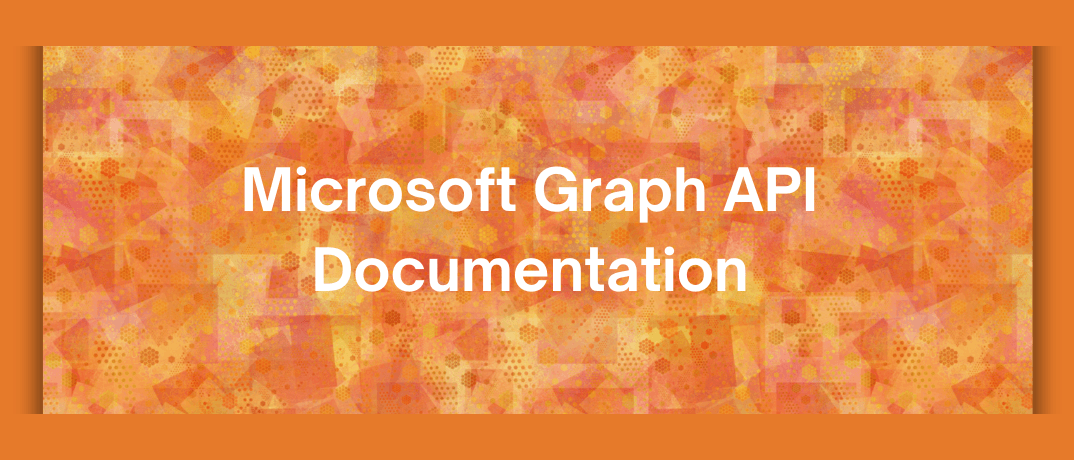Microsoft Graph API an essential tool for developers aiming to connect with a wide array of Microsoft services. This blog post delves into the intricacies of Microsoft Graph API documentation, exploring its features, benefits, and how it can empower your development projects.
What is Microsoft Graph API?
Microsoft Graph API is a unified endpoint that provides access to a wealth of Microsoft services and data, including Microsoft 365, Windows 10, and Enterprise Mobility + Security. It allows developers to interact with data from multiple Microsoft services through a single API, streamlining the process of building and integrating applications.
The API enables access to a broad range of resources, such as user profiles, calendars, emails, and documents, making it a powerful tool for creating applications that require deep integration with Microsoft products. By using Microsoft Graph API, developers can improve their applications with features like authentication, data access, and communication capabilities.
Key Features of Microsoft Graph API
- One of the most significant advantages of Microsoft Graph API is its unified endpoint. Instead of dealing with multiple APIs for different Microsoft services, developers can use a single endpoint to access data and interact with various Microsoft services.
- Microsoft Graph API provides access to a wide range of data sources, including user profiles, emails, calendars, and files. This rich data access enables developers to create applications that leverage Microsoft’s ecosystem effectively.
- The API is deeply integrated with Microsoft 365, allowing developers to build applications that work seamlessly with Office 365, SharePoint, OneDrive, and other Microsoft services.
- Microsoft Graph API ensures that data access adheres to stringent security and compliance standards. With built-in support for authentication and authorization, developers can manage user permissions and protect sensitive data.
- Microsoft Graph API is designed to support both web and mobile applications. Its RESTful nature and support for various data formats, such as JSON and XML, make it versatile and easy to integrate into different platforms.
Navigating Microsoft Graph API Documentation
To effectively use Microsoft Graph API, developers need to understand its documentation thoroughly. The documentation serves as a comprehensive guide, offering insights into API endpoints, data models, authentication methods, and more. Here’s a breakdown of what to expect from Microsoft Graph API documentation:
- The documentation begins with a "Getting Started" section, which provides an overview of the API and guides developers through the initial setup. It includes instructions for registering applications, obtaining access tokens, and making your first API calls.
- The API reference section details the available endpoints and their respective functionalities. It includes information on resource types, request and response formats, and query parameters. This section is crucial for understanding how to interact with specific data types and services.
- Authentication and authorization are fundamental aspects of using Microsoft Graph API. The documentation explains how to implement OAuth 2.0 for securing API requests and managing user permissions. It also provides guidance on handling access tokens and refresh tokens.
- To facilitate development, Microsoft Graph API documentation includes code samples in various programming languages. These examples demonstrate how to make API requests, handle responses, and integrate the API into different applications.
- The documentation provides information on common error codes and their meanings. Understanding these error codes is essential for troubleshooting issues and ensuring smooth API interactions.
- Microsoft Graph API documentation offers best practices for using the API effectively. This includes tips on optimizing performance, managing API usage, and adhering to security guidelines.
Benefits of Using Microsoft Graph API
- Providing a unified endpoint for multiple Microsoft services, Microsoft Graph API simplifies the development process. Developers can access a wide range of data and services without having to deal with multiple APIs, reducing complexity and saving time.
- Microsoft Graph API enables deep integration with Microsoft 365 and other Microsoft services. This integration allows developers to create applications that leverage existing Microsoft data and functionality, enhancing user experience and productivity.
- The API is designed to handle large volumes of data and requests. Its scalable architecture ensures that applications can grow and adapt to changing needs without compromising performance.
- Microsoft Graph API incorporates robust security features, including support for OAuth 2.0 and granular permission management. This ensures that data access is controlled and secure, protecting sensitive information.
- Microsoft Graph API has a vibrant developer community. The documentation, forums, and support channels offer valuable resources for troubleshooting and getting help with development challenges.
Practical Use Cases for Microsoft Graph API
Building Productivity Apps: Microsoft Graph API is ideal for developing applications that enhance productivity, such as project management tools, team collaboration platforms, and document management systems. By integrating with Microsoft 365 services, these applications can offer features like calendar synchronization, email notifications, and file sharing.
- Developers can use Microsoft Graph API to create personalized user experiences. For example, applications can use user profile data to tailor content and recommendations based on individual preferences and behaviors.
- Microsoft Graph API can automate various business processes by integrating with Microsoft services. This includes automating tasks such as data entry, report generation, and workflow management.
- Applications can use Microsoft Graph API to enforce security policies and compliance requirements. This includes managing user permissions, monitoring data access, and ensuring adherence to organizational policies.
Microsoft Graph API documentation is an invaluable resource for developers looking to harness the power of Microsoft’s ecosystem. By providing comprehensive information on API endpoints, authentication, and best practices, the documentation enables developers to create robust and integrated applications. Whether you’re building productivity tools, customizing user experiences, or automating business processes, Microsoft Graph API offers a unified and powerful solution.

"Check out Klamp Flow's pricing for budget-friendly automation solutions."




